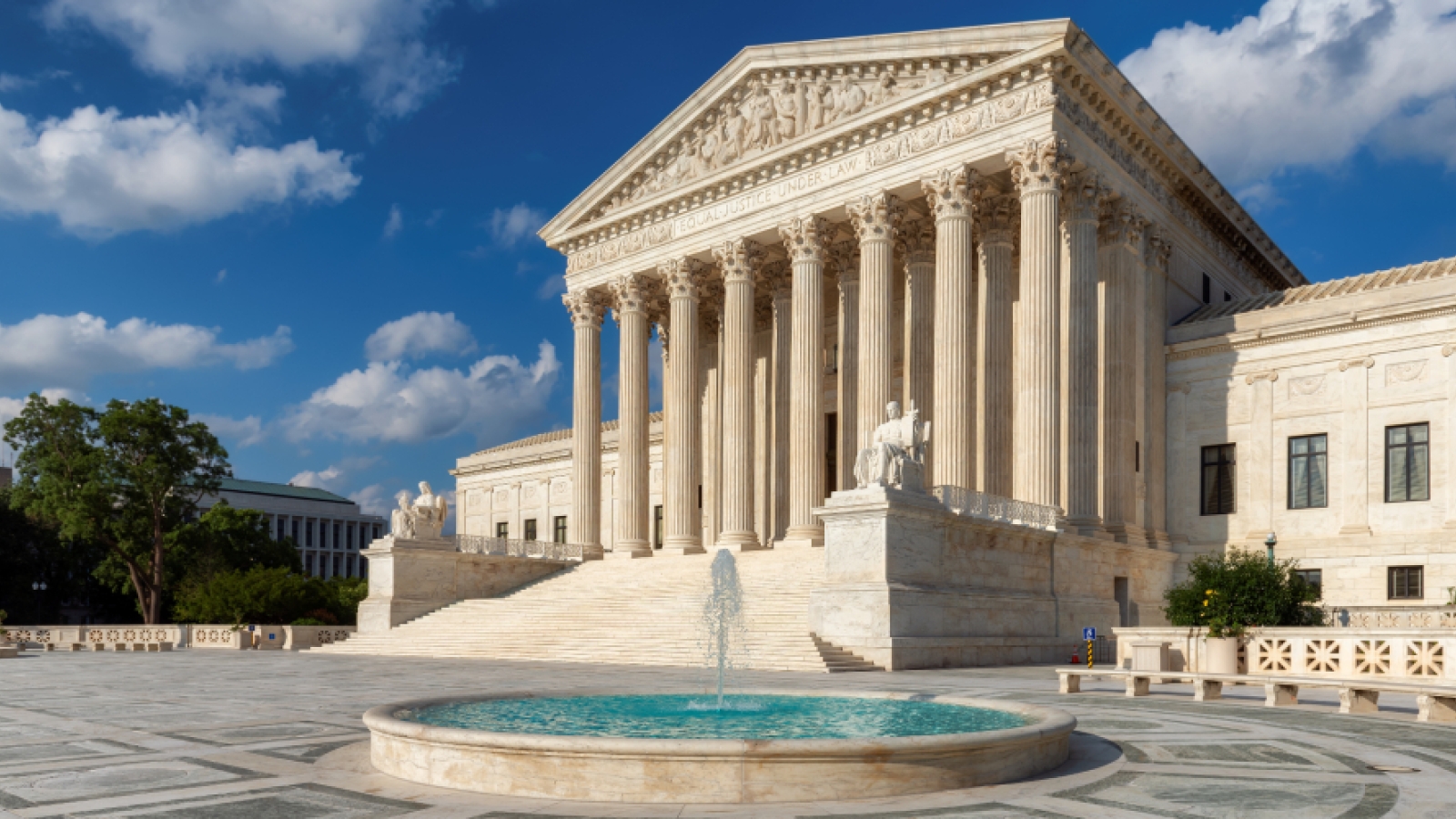OMNIA Q&A: Church, State, and Today’s Supreme Court
Gabriel Raeburn, GR’22, Dean’s Teaching Fellow for Excellence in Religious Studies, highlights religion’s role in recent blockbuster rulings.

At the close of its latest term, the U.S. Supreme Court issued a series of religiously charged rulings that shocked many people across the country. Gabriel Raeburn, GR’22, wasn’t one of them.
“The separation of church and state in America has always been blurry,” says Raeburn, who completed his Ph.D. in religious studies and history last spring and is now a Dean’s Teaching Fellow for Excellence in the Department of Religious Studies. “While we previously saw a Court that was more active in protecting minority religions for much of the 20th century, we’re now seeing a shift toward prioritizing the rights of conservative Christians. That might be a problem, but I wouldn’t say it should come as a shock, given the organizing we’ve seen on the right over the last few decades.”
Here, Raeburn—who is teaching an undergraduate seminar called Religion and Politics in America this fall—discusses the framework for the Court’s recent decisions involving prayer in public schools, funding for religious education, and abortion rights.
In Kennedy v. Bremerton School District, the Court backed a public high-school football coach who was suspended for refusing to stop praying with players on the field. Did the main question here pertain to the First Amendment’s Establishment Clause, which prohibits any government endorsement of religion?
Two cases in the early 1960s [Engel v. Vitale and Abington School District v. Schempp] effectively said you cannot have formal prayer and Bible reading in public schools—so teachers and students can still pray privately, as long as they’re not coercing others to participate. Here, the Court overlooked the coercion issue and counted the coach’s actions as constitutional private prayer. Evangelical Christians, who often consider themselves to be dissenters and victims of discrimination, instead viewed this case as a question of religious freedom—and the Court agreed.
The ruling in the other school-related case, Carson v. Makin, will allow taxpayer money to be used for students to attend religious schools in areas of Maine without public high schools. Why is state-subsidized enrollment in religious schools controversial?
Keeping church and state separated prevents the hollowing out of our public institutions. The key in this case is the privatization of public resources. Most conservatives aim to see a shrinking of public institutions and an increase in privatization, and decisions like this privilege certain groups and make demarcations over who should get goods, when public education should be a right that is available everywhere.
The majority opinion in Dobbs v. Jackson Women’s Health Organization struck down the 1973 Roe v. Wade decision guaranteeing abortion rights. What role did religion play here?
The fact that five of the six justices on the Court’s conservative bloc are Catholic is part of the answer, but what’s more interesting is what their roles say about the changing space of Catholicism in America. Evangelicals and Catholics have spent decades strengthening what was once an unlikely alliance. Before Roe, the main drivers of anti-abortion activism were Catholics, during a period of deep anti-Catholicism across the country—Al Smith lost the 1928 presidential election in part because of anti-Catholicism, and many evangelicals and fundamentalist leaders opposed JFK becoming the first Catholic president in 1960.
While many evangelicals were uneasy with abortion, they didn’t join Catholics in their outcry against it until the '70s. Many evangelicals and New Right leaders realized it was a wedge issue they could use in their broader fight against feminism, and there was also lots of grassroots organizing from different conservative religious groups against abortion. Over time, these once-oppositional Christian communities partnered to build a legal infrastructure that would advance their social agendas.
What first inspired this coalition-building?
The conservative legal movement started as a response to the “Warren Court.” Earl Warren was Chief Justice of the United States from 1953 to 1969, and he and his fellow justices moved the country in a progressive direction with decisions involving desegregation, the school prayer cases we mentioned before, and birth control. While many conservative evangelicals, Catholics, and Mormons had been unwilling to work together in the 1950s and 1960s, this had changed by the 1980s. Many of these groups expected President Reagan to pass legislation and support constitutional amendments allowing prayer back in schools and banning abortion—but he didn’t.
What strategies did these groups use to put the country back onto a more conservative path?
They created the Federalist Society, a nationwide pipeline of conservative lawyers they could stack the courts with at every level, not just the Supreme Court. They also established a lot of legal foundations—the Liberty Counsel, for example—to provide support in religious freedom cases. Other foundations that emerged during this period were set up to provide legal services to violent extremists who targeted and bombed abortion clinics.
Do these recent decisions signify an end to the separation of church and state in the U.S.?
It’s easy to see why some people might be defeatist right now, but I would note that the Supreme Court has been an oppositional force to progress at multiple times throughout history, and progress was still able to be made. For example, the Court was explicitly pro-slavery and opposed the New Deal, yet there were still big achievements made during those periods. There is a completely understandable feeling of resignation at the moment, but this isn’t necessarily the end of anything.



